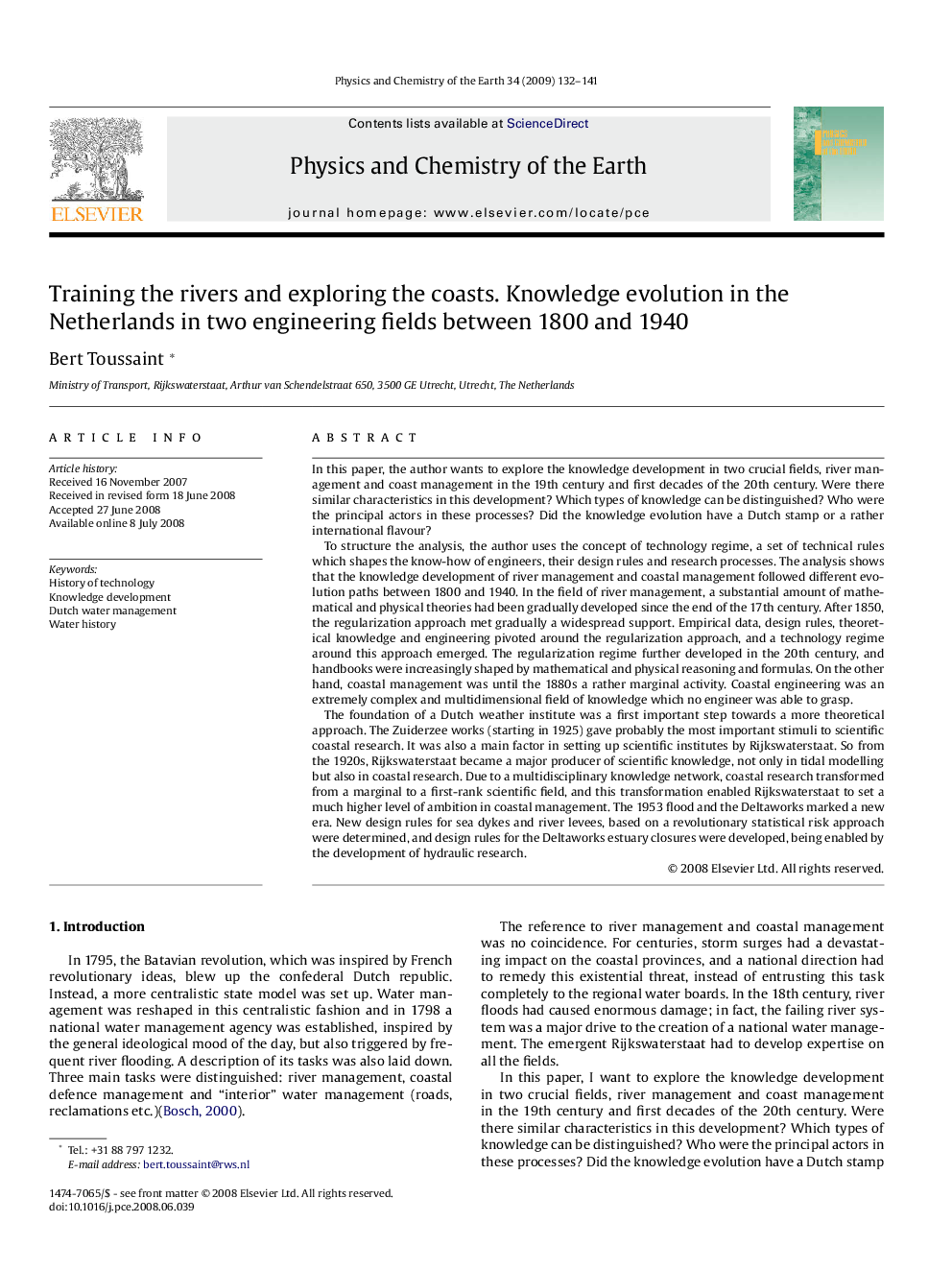| کد مقاله | کد نشریه | سال انتشار | مقاله انگلیسی | نسخه تمام متن |
|---|---|---|---|---|
| 4722235 | 1639393 | 2009 | 10 صفحه PDF | دانلود رایگان |

In this paper, the author wants to explore the knowledge development in two crucial fields, river management and coast management in the 19th century and first decades of the 20th century. Were there similar characteristics in this development? Which types of knowledge can be distinguished? Who were the principal actors in these processes? Did the knowledge evolution have a Dutch stamp or a rather international flavour?To structure the analysis, the author uses the concept of technology regime, a set of technical rules which shapes the know-how of engineers, their design rules and research processes. The analysis shows that the knowledge development of river management and coastal management followed different evolution paths between 1800 and 1940. In the field of river management, a substantial amount of mathematical and physical theories had been gradually developed since the end of the 17th century. After 1850, the regularization approach met gradually a widespread support. Empirical data, design rules, theoretical knowledge and engineering pivoted around the regularization approach, and a technology regime around this approach emerged. The regularization regime further developed in the 20th century, and handbooks were increasingly shaped by mathematical and physical reasoning and formulas. On the other hand, coastal management was until the 1880s a rather marginal activity. Coastal engineering was an extremely complex and multidimensional field of knowledge which no engineer was able to grasp.The foundation of a Dutch weather institute was a first important step towards a more theoretical approach. The Zuiderzee works (starting in 1925) gave probably the most important stimuli to scientific coastal research. It was also a main factor in setting up scientific institutes by Rijkswaterstaat. So from the 1920s, Rijkswaterstaat became a major producer of scientific knowledge, not only in tidal modelling but also in coastal research. Due to a multidisciplinary knowledge network, coastal research transformed from a marginal to a first-rank scientific field, and this transformation enabled Rijkswaterstaat to set a much higher level of ambition in coastal management. The 1953 flood and the Deltaworks marked a new era. New design rules for sea dykes and river levees, based on a revolutionary statistical risk approach were determined, and design rules for the Deltaworks estuary closures were developed, being enabled by the development of hydraulic research.
Journal: Physics and Chemistry of the Earth, Parts A/B/C - Volume 34, Issue 3, 2009, Pages 132–141